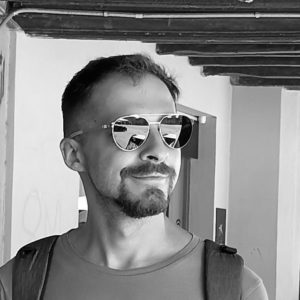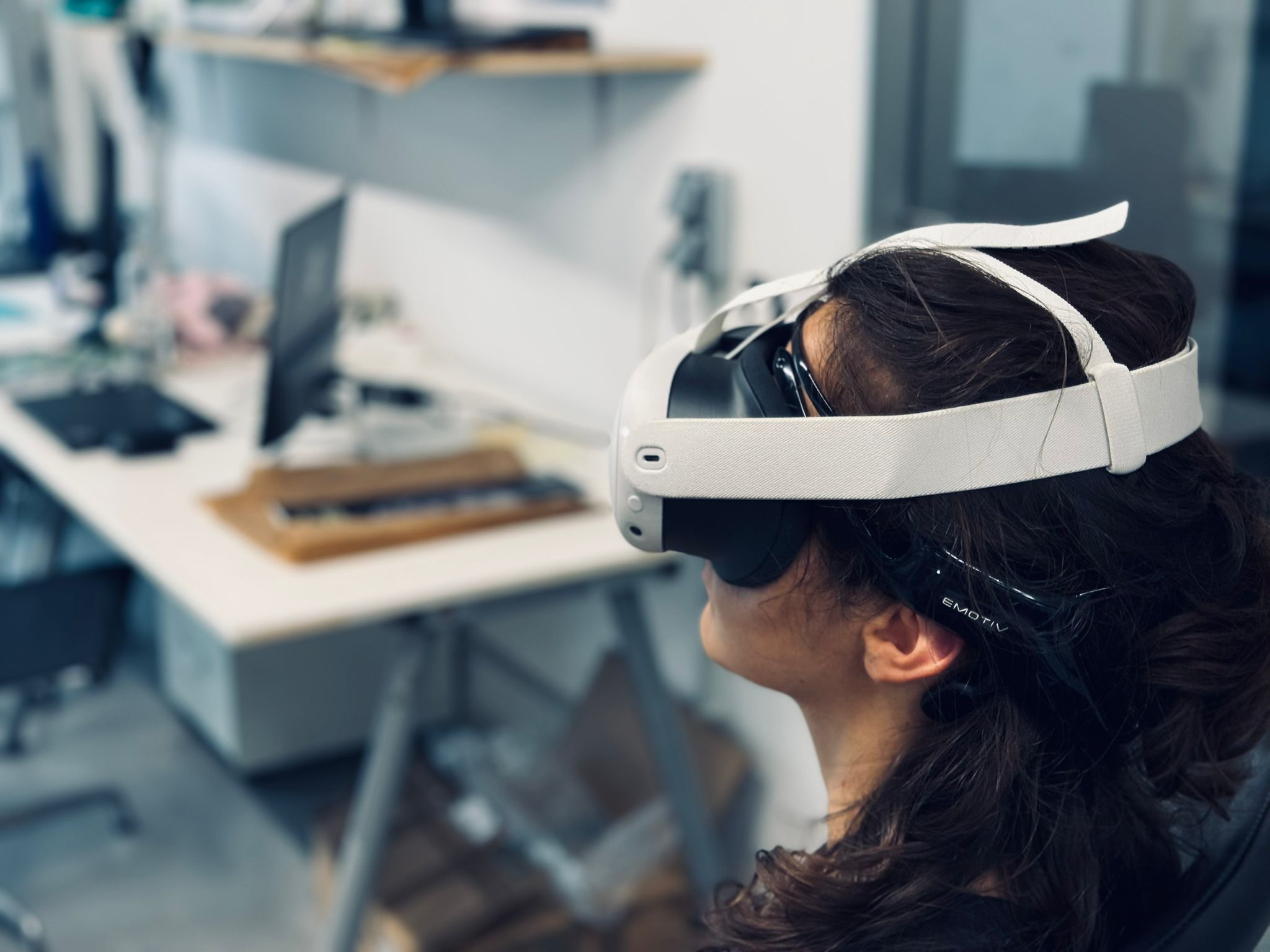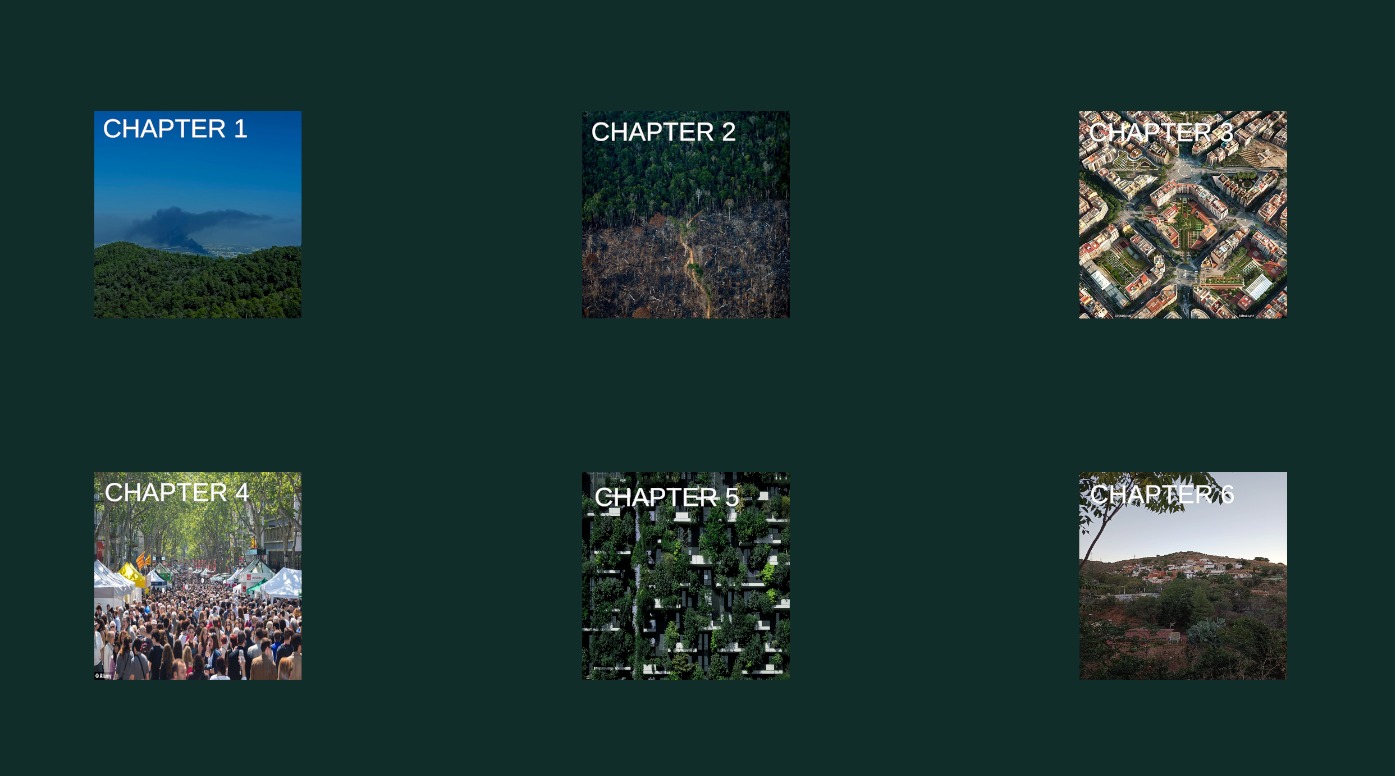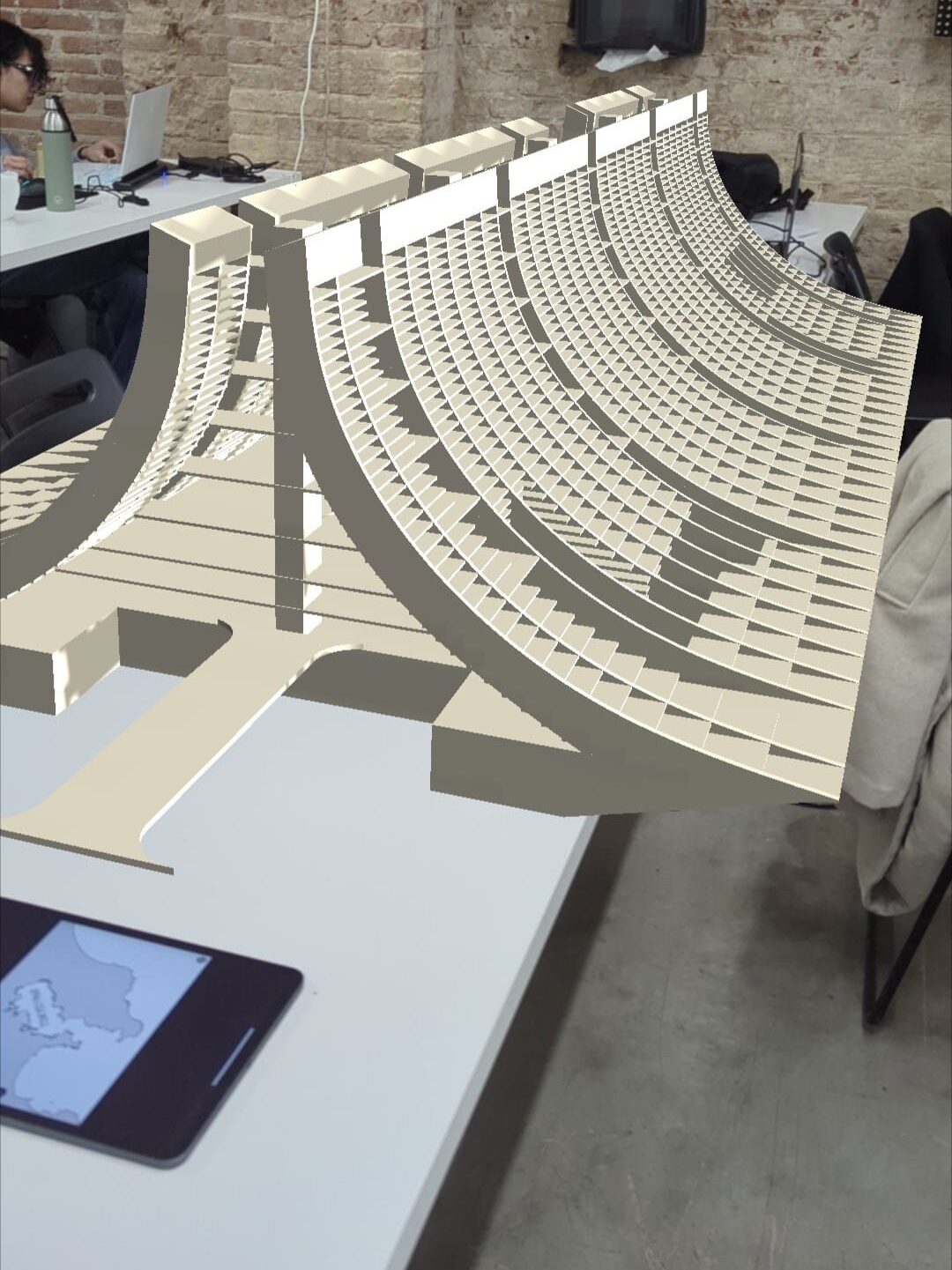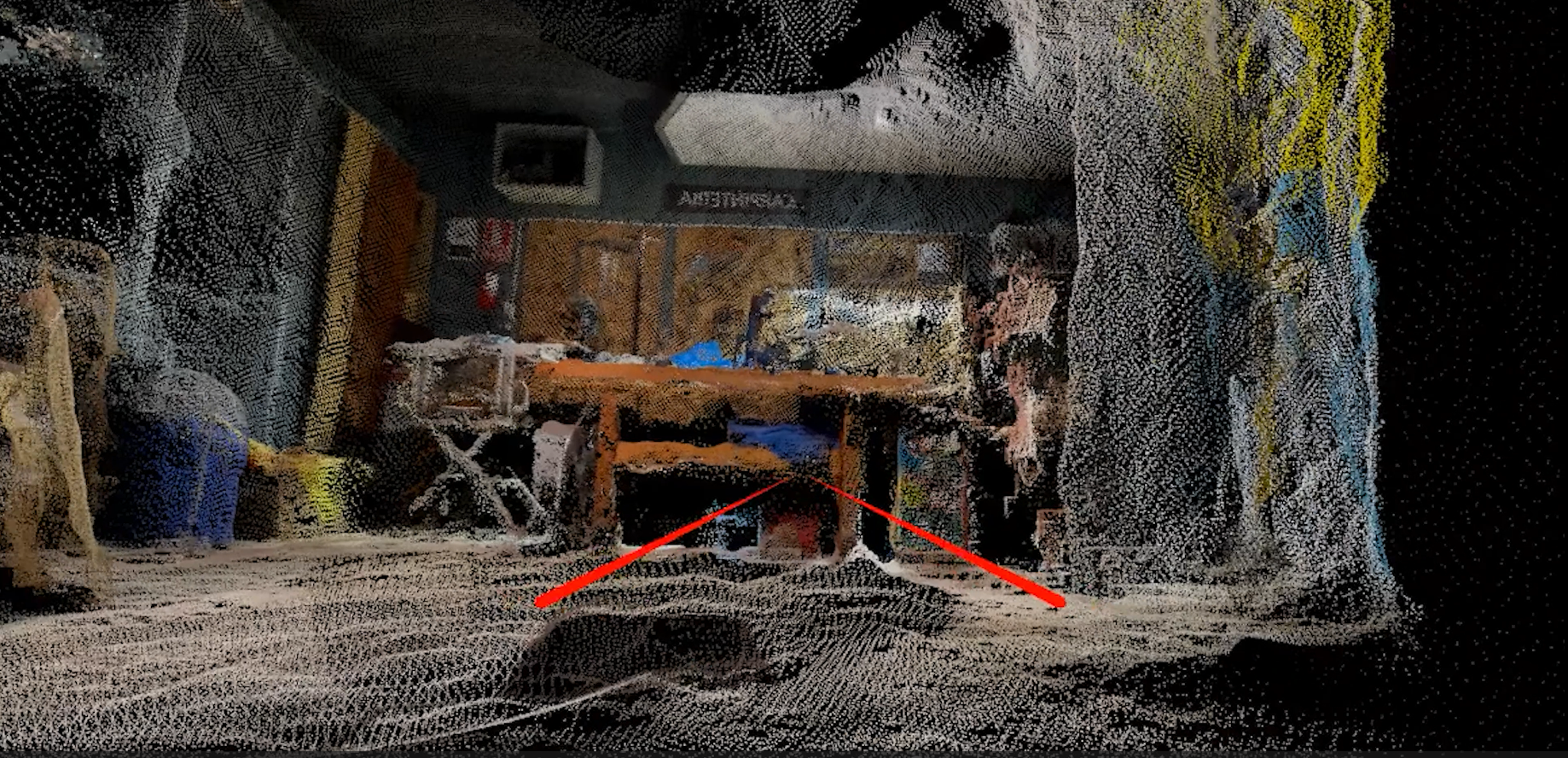
Photo Credits: student project Risk Vision MR – Urban MR seminar, MACT02 2022-2023, IAAC
Description
Ubiquity of personal computing makes it possible for us to carry a device in our pocket that was barely possible to fit in a whole building not so long ago. In the context of ever expanding digitalization, our profession has been fluid and has been incorporating various techniques and tools to both respond to the challenges and leverage new possibilities these shifts imply. We are now capable of exploring and reaching geometries there were impossible or impractical to describe manually, simulate more and more aspects of reality to minimise errors or biases of our subjective thinking, incorporate intelligence and user customizability in all stages of design and urban development, or achieve mass customization in fabrication with less effort and on bigger scales, etc.. With this we are facing two fold challenges: on one hand we need more and more capable tools to allow us to match our creative expression, and on the other, – we have to communicate more intricate and complex decisions that go into our decision making.
To address these issues, students are invited to explore a medium of Extended Reality (XR) devices to create project-specific and interactive tailored experiences. Similar to how computing went from a dedicated profession to a common skill within the last 70 years, it can be argued that in the current state of technologies, the ability to script personalised programs to fit our needs is experiencing the same transition. In many cases big tools while being generally applicable, useful and necessary – have limitations as they can’t reflect the full range of nuances for all possible applications, or can be an overkill requiring more effort than the benefit they provide. Thus the goal of this seminar will be to provide necessary skills, approaches, techniques, and mindsets to be able to create bespoke prototypes and practical tools that fit individual agendas. In this regard the primary focus will be around exploring solutions in the spectrum of Mixed Reality, as it taps into the key aspect of our perception: spatiality.

Photo Credits: student project VR gamification W.3.2, MRAC01, 2020-2021, IAAC
The seminar will be centred around flexibly applying these building blocks to individual students’ thesis projects. In the process we will experiment with various devices on the spectrum (to make informed decisions on what fits best for certain use-cases by comparing both strengths and weaknesses of each), as well as explore approaches needed to set up such scenarios both from the technical perspective (using Unity Engine and extending it with C# Object Oriented Programming (OOP)) and from the user journey perspective – be that a citizen, client or designer himself.(breaking down mixed physical and digital aspects with often non-linear interconnection and communication required into manageable and comprehensible steps).
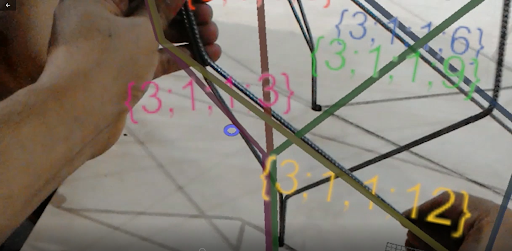
Photo Credits: HoloFab by Ardeshir Talaei, Daniil Koshelyuk & Armin Akbari, 2018
Learning Objectives
At course completion the student will:
- Understand types of MR technologies, limitations and learn appropriate applications;
- Be able to prototype ideas with mentioned technologies;
- Define UX flow, translating project ideas into tangible steps;
- Shift from the mindset of finding tools to find the need to create tools to fit the goal..




